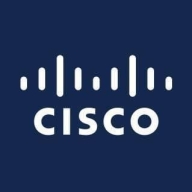

PRTG Network Monitor and Cisco UCS Manager compete in the network and infrastructure management category. PRTG Network Monitor has the upper hand due to its ease of use and lower cost, while Cisco UCS Manager is preferred for its comprehensive management features but requires more expertise.
Features: PRTG Network Monitor is known for its scalability, robust monitoring, and ease of setup, offering frequent updates and intuitive dashboards. Cisco UCS Manager excels at managing network and storage elements in virtualized environments, offering flexible server profiles and centralized administration.
Room for Improvement: PRTG Network Monitor can improve application monitoring, reporting capabilities, and sensor versatility. Cisco UCS Manager should enhance its user interface, integration capabilities, and firmware upgrade processes.
Ease of Deployment and Customer Service: PRTG Network Monitor is praised for its straightforward deployment and quick adoption across environments, although technical support is limited to email. Cisco UCS Manager offers reliable customer support but is challenging for small organizations due to complex setups.
Pricing and ROI: PRTG Network Monitor is cost-effective for small to medium organizations, providing strong ROI but may become expensive in larger environments. Cisco UCS Manager requires a higher initial investment, offering value in large-scale deployments despite higher costs.
There's no need for an extra management device or virtual machine, as everything runs within the fabric interconnect.
Cisco UCS Manager provides cost savings by reducing the time support staff spend on long deployments.
It provides accurate data for utilization, allowing us to monitor and optimize our investments in WAN connection capacity.
After introducing PRTG Network Monitor, we have saved time, and it's easy for everybody to monitor everything.
The implementation reduced our employee resources from 20-25 to 5-6 employees.
For a severity one case, a call ensures immediate assistance and resolution of the matter.
With Intersight, service requests are automatically generated, enhancing the user experience and providing timely resolutions.
Regarding Cisco tech, they are pretty good.
They resolve our queries 24/7.
The setup process is well-documented, making it easy to deploy.
Tutorials are available so I can manage any issue with PRTG Network Monitor easily.
Adding new chassis and extra blades is streamlined.
I would rate the scalability at nine out of ten, probably.
On a scale of one to ten, scalability is rated as 9.5.
PRTG Network Monitor has the ability to scale and add new devices.
You can install them in each network, even if they are not connected, and it works.
If there's a really complex problem, I would probably give it a ten since it gets escalated quickly.
We haven't needed vendor support for the last three years, which demonstrates the product's stability.
PRTG Network Monitor is stable in my experience, and I have not encountered issues with crashes or downtime.
PRTG Network Monitor is very stable and requires low maintenance.
We would benefit from advancements in AI that offer firmware recommendations automatically, reducing the need for human intervention and vendor communication.
It doesn't work straight out of the UCS, so someone who knows what they're doing is needed immediately, and it can be quite confusing.
While it has been improved from using Java to HTML, simplifying the tabs would enhance user experience.
The initial auto-discovery added too many unnecessary sensors, so auto-discovery should only take the necessary sensors into consideration.
They need to improve application performance monitoring, error tracing mechanisms, and log management.
PRTG Network Monitor should provide syslog monitoring since it is not available at this time.
Recently, we acquired an excellent bundle with significant discounts, with offers like buying three servers and getting one free, along with UCSC and fabric included for free.
As long as they can afford it, there is a setup cost involved.
The licensing part is a recurring license for every year, which is very affordable, making PRTG Network Monitor budget-friendly.
Pricing is by the number of devices, not by sensor.
The prices are very high for PRTG Network Monitor.
It supports ease of deployment, allowing for quick mass deployments in the data center, saving time and resources by doing so from a remote location.
Whenever there's a failure of any component, it's very easy to swap because you just disassociate that profile, remove the faulty blade, connect the new blade, and associate that profile, maintaining the same MAC address and worldwide port name.
One of the valuable features is the user interface base, specifically the C user interface.
PRTG Network Monitor already provided me with 100 free sensors, which is enough for my network monitoring.
PRTG Network Monitor has a good dashboard that shows each and every piece of information, so we can easily find out what is happening with the systems.
These reports help me in my day-to-day work, and I rely on them because they provide proof during escalation, with exact downtime logs and related information.
| Product | Market Share (%) |
|---|---|
| PRTG Network Monitor | 4.4% |
| Cisco UCS Manager | 1.2% |
| Other | 94.4% |


| Company Size | Count |
|---|---|
| Small Business | 8 |
| Midsize Enterprise | 3 |
| Large Enterprise | 18 |
| Company Size | Count |
|---|---|
| Small Business | 59 |
| Midsize Enterprise | 18 |
| Large Enterprise | 45 |
PRTG Network Monitor runs on a Windows machine within your network, collecting various statistics from the machines, software, and devices which you designate. PRTG comes with an easy-to-use web interface with point-and-click configuration. You can easily share data from it with non-technical colleagues and customers, including via live graphs and custom reports. This will let you plan for network expansion, see what applications are using most of your connection, and make sure that no one is hogging the entire network just to torrent videos.
To monitor a large IT environment, it's important to be able to scale PRTG up. Paessler PRTG Enterprise Monitor includes all the proven capabilities of PRTG Network Monitor, which are enhanced by exclusive ITOps Board for a service-oriented, central overview of multiple PRTG servers.
We monitor all IT Infrastructure Monitoring reviews to prevent fraudulent reviews and keep review quality high. We do not post reviews by company employees or direct competitors. We validate each review for authenticity via cross-reference with LinkedIn, and personal follow-up with the reviewer when necessary.